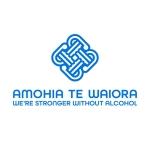IA research to look at the impact of extra liquor outlets on communities
New research being commissioned should for the first time give local authorities a New Zealand evidence base to determine the impact of new liquor outlets on their communities.
The research is being commissioned by the Alcohol Advisory Council (ALAC) and is an extension of previous research conducted in Manukau. That research which has just been finalised found off-licence liquor outlets in Manukau (alcohol retailers, supermarkets and bottle stores) tend to be located in high population, high deprivation areas and are associated with lower alcohol prices, longer opening hours and a range of social harms including violence, sexual, drug, alcohol and property offences, as well as motor vehicle accidents.
While Manukau on-licence outlets (bars, clubs, restaurants and cafes) are predominantly located in main centres and areas of high amenity value they, like off-licence outlets, are also associated with a range of social harm.
ALAC Chief Executive Officer Gerard Vaughan said the Alcohol Reform Bill currently before Parliament proposes making local authorities consider the effects on the community of renewing or issuing new liquor licences.
The bill proposed widening the grounds for objecting to the issue or renewal of a licence to include the effect on the amenity or good order of a locality, said Mr Vaughan.
If the law is changed to widen the grounds for refusing a liquor licence, evidence will still need to be produced of the harms that might result, Mr Vaughan said.
Mr Vaughan said ALAC had now extended the research to cover all of the North Island. The research should for the first time give North Island local authorities a New Zealand evidence base to determine the impact of new liquor outlets on their communities.
The Manukau research was carried out by Waikato University between 2008 and 2010 and supported by the former Manukau City Council. Preliminary research reports were released in 2010 and the final reports have now been completed after extensive testing and peer review.
Waikato researcher and lead author of the reports Dr Michael Cameron said although the Manukau results were specific to that area, the model that had been developed could be used in other areas to determine what impact extra liquor outlets would have on a district.
The results show associations between liquor outlet density and selected social harms, but they do not imply cause. Nevertheless the findings show that a range of alcohol-related harm is positively associated with increasing liquor outlet density for both off-licence and on-licence premises.
Copies of the Manukau research are available on the ALAC website at www.alac.org.nz
